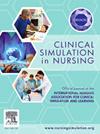Effectiveness of chatbot iCAN on reporting of child and adolescent abuse and neglect among emergency nurses: A pilot study
IF 2.5
3区 医学
Q1 NURSING
引用次数: 0
Abstract
Background
Child and adolescent abuse and neglect (CAN) can lead to long-term trauma. These experiences can also contribute to cycles of family violence. Emergency nurses frequently encounter suspected cases, making it essential to strengthen their recognition and reporting competencies. This study examined the effectiveness of chatbot-facilitated education in improving CAN-related knowledge, attitudes, and reporting intention.
Methods
A two-group repeated-measures design was used with 32 emergency nurses recruited through purposive sampling. Both groups received CAN education; the experimental group additionally interacted with a chatbot named iCAN. Assessments were conducted at pre-test, post-test (week 1), and follow-up test (week 4).
Results
The experimental group showed significantly greater improvement in CAN knowledge and reporting intention (p < .001) compared to the control group. While reporting attitudes improved in the experimental group and declined in the control group, between-group differences were not statistically significant (p > .05).
Conclusions
Chatbot-facilitated education significantly enhanced emergency nurses’ CAN knowledge and intention to report. Optimizing chatbot design may further support nurses in identifying and reporting suspected cases.
聊天机器人iCAN在急救护士中报告儿童和青少年虐待和忽视的有效性:一项试点研究
儿童和青少年的虐待和忽视(CAN)可能导致长期的创伤。这些经历也会导致家庭暴力的循环。急诊护士经常遇到疑似病例,因此必须加强其识别和报告能力。本研究考察了聊天机器人促进教育在改善can相关知识、态度和报告意图方面的有效性。方法采用两组重复测量法,采用目的抽样法对32名急诊护士进行调查。两组均接受CAN教育;实验组还与一个名为iCAN的聊天机器人进行互动。分别在测试前、测试后(第1周)和随访(第4周)进行评估。结果实验组在CAN知识和报告意愿方面较对照组有显著提高(p < .001)。实验组的报告态度有所改善,对照组的报告态度有所下降,但组间差异无统计学意义(p > 0.05)。结论机器人辅助教育显著提高了急诊护士的CAN知识和报告意愿。优化聊天机器人设计可以进一步支持护士识别和报告疑似病例。
本文章由计算机程序翻译,如有差异,请以英文原文为准。
求助全文
约1分钟内获得全文
求助全文
来源期刊

Clinical Simulation in Nursing
NURSING-
CiteScore
5.50
自引率
15.40%
发文量
107
期刊介绍:
Clinical Simulation in Nursing is an international, peer reviewed journal published online monthly. Clinical Simulation in Nursing is the official journal of the International Nursing Association for Clinical Simulation & Learning (INACSL) and reflects its mission to advance the science of healthcare simulation.
We will review and accept articles from other health provider disciplines, if they are determined to be of interest to our readership. The journal accepts manuscripts meeting one or more of the following criteria:
Research articles and literature reviews (e.g. systematic, scoping, umbrella, integrative, etc.) about simulation
Innovative teaching/learning strategies using simulation
Articles updating guidelines, regulations, and legislative policies that impact simulation
Leadership for simulation
Simulation operations
Clinical and academic uses of simulation.
 求助内容:
求助内容: 应助结果提醒方式:
应助结果提醒方式:


